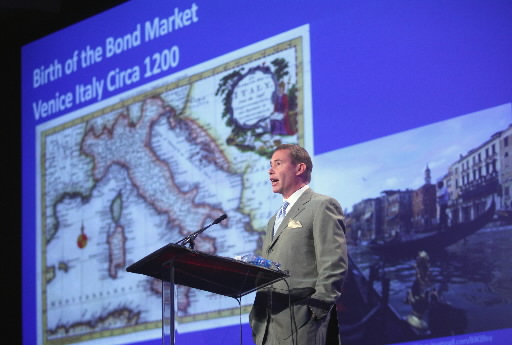What happens when Jeffrey Gundlach, Michael Hasenstab and Matthew Eagan all team up to subadvise a single fund? We're about to find out.
You can't blame Matthew Eagan, vice president of Loomis Sayles & Co. Inc., if he suddenly feels like the Chris Bosh of mutual fund managers.
Mr. Bosh, of course, plays for the NBA's Miami Heat. If he played on any other team, he'd be the top dog. In Miami, he's overshadowed by megastars Lebron James and Dwayne Wade.
Likewise, Mr. Eagan, who co-manages the $31 billion Loomis Sayles Bond Fund, is one of the biggest names in the fixed-income portfolio universe. But he's not quite as big a name as DoubleLine's Jeffrey Gundlach or Templeton's Michael Hasenstab — Mr. Eagan's new teammates on the GuideMark Opportunistic Fixed-Income Fund Ticker:(GMIFX).
Genworth Financial Wealth Management, the investment adviser to the GuideMark funds, announced earlier this week that Mr. Gundlach was joining the opportunistic fixed-income fund as a subadviser. Mr. Hasenstab, who runs Templeton's Global Bond Fund, and Mr. Eagan already advise on the fund.
Genworth expects the addition of Mr. Gundlach, who specializes in mortgage backed securities, will combine well with Mr. Hasenstab's expertise in global bonds and currencies, and with Mr. Eagan's expertise in credits.
Genworth is also probably betting that Mr. Gundlach's arrival will not only lead to better risk-adjusted returns for the fund but also attract some assets.
The GuideMark Opportunistic Fixed-Income Fund, launched in April 2011, has about $245 million in assets. To put that in perspective, Mr. Gundlach's DoubleLine Total Return Fund alone has had $21 billion of inflows since the GuideMark fund was launched, according to Lipper Inc. The “big three” manage more than $120 billion in their flagship funds.
Of course, with great star power comes great responsibility.
“People are definitely going to be attracted to the star power,” said Matthew Lemieux, analyst at Lipper. “There are going to be very high expectations. It's going to come down to whether or not they can deliver.”
The biggest pressure will be on Genworth, Mr. Lemieux said. The company's management must figure out the right asset allocation among the three PMs to deliver the best returns. Annette Bronkesh, spokeswoman for Genworth, declined to comment on how the assets would be managed among the subadvisers.
Another concern: If one of the managers' own funds is having a great year, but the Genworth fund lags, investors could get upset, Mr. Lemieux warned.
The GuideMark Opportunistic Fixed-Income Fund has trailed the Templeton Global Bond Fund and the Loomis Sayles Bond Fund through August, but only by 133 basis points and 73 basis points, respectively. Its 8.95% return through August still trumps its benchmark index by more than 500 basis points, according to Lipper.
One of the reasons for the underperformance of the GuideMark fund, relative to the subadvisers' funds, is its expense ratio. The GuideMark fund charges 1.55%, while none of the subadvisers charge more than 0.92%. The subadvisers' own funds benefit from their size, which provides economies of scale.
Thus, despite the fixed-income giants now advising GuideMark, Genworth may find that attracting more money for the fund isn't exactly a slam dunk.







